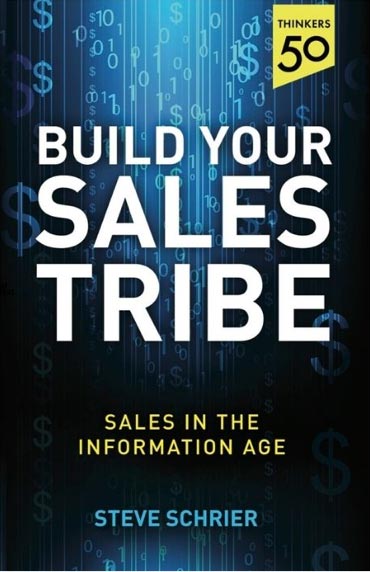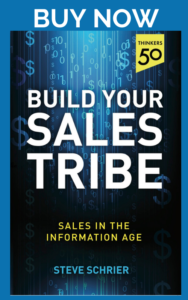
As discussed in the Sales Process chapter of the Build Your Sales Tribe book, ‘closing’ techniques are normally unsuccessful for larger sales. So, what are ‘closing techniques’ and should they be used at all in modern selling?
‘Closing’ deals
In the 1992 film ‘Glengarry Glen Ross‘, the Alec Baldwin character gives a lecture which contains many famous lines about ‘closing’. You can watch it here:
‘Always Be Closing’, ‘Coffee is for closers’, are examples of these famous lines. Whilst the film is entertaining, this is a very aggressive approach to getting out there and pressurising customers into doing business.
The first problem is that in the Information Age, it is more likely that a sales person is trying to ‘start’ a relationship with a customer. Therefore, ‘closing’ is the wrong adjective to be using or even thinking about.
In a lot of business models in the modern age, the first sale is only a start of the process. Whilst signing the customer is a very important element, this often will need to trigger a whole set of additional activity. That then takes the customer on a journey to realise the full potential of the buyer/seller relationship.
Closing – The outdated way of thinking
The sales person should be focused on finishing the deal and starting the relationship. Or the sales people who are not finishing deals could be considered not sales people at all. But ‘closing’ is such an out-dated way of thinking about finishing a deal (if it ever was the right way). This only pressures the prospective customer. These days, for anything other than commodity products and services, this is more likely to lose the sale then gain it.
Therefore, it is our belief that while ‘Closing’ or finishing a deal is an important part of selling. ‘Closing techniques’ will cost a supplier deals and money! Traditional ‘closing’ techniques, such as the ‘Assumptive Close’ or ‘Ben Franklin’ have no place in the more complex selling required in the Information Age. The sales people are not in control of whether the customer will buy from a supplier – the customer is.
The bigger the decision, the more negatively people are likely to react to pressure.
Closing techniques demonstrate an arrogance that someone may be stupid enough or manipulated into buying something before they are ready. In modern selling there is more likely more than one person in the buying seat, this demonstrates a naïve attitude.
And, if your customers know anything about selling, and they may well, their reaction will usually be bad. This will lead to you receiving less business as a result.
If you want to read more about closing techniques, it just takes a simple Google to find out what people will often ‘push’ as successful ways of closing a deal.
Instead, it is important to have a sales process that focuses on ongoing commitment from the customer as they go through it.
Finishing a deal in the Information Age
We discuss this in the book but commitment means some sort of tangible measure from the customer. ‘We’ll be in touch’ does not cut it. It has to be something like this:
Set date for product demonstration X date and X time, with X relevant people whose names are X,Y and Z and whose functions are A, B and C’.
Customer needs will have been discovered across the process by asking the right questions. All notes will have been verified with the customer. Most often, a proposal will be in place which documents the conversations that have taken place. Also the needs of the customer and why there is a clear reason to go forward with a deal. If not a formal proposal something that’s captured in a collaborative way helping the sales person and buyer articulate why a direction is being taken. This will also bring value to the relationship.
Firstly, this will also contain clear business terms which have been agreed. For complex deals, but also for a lot of more simple ones where a sales person is involved. Secondly, these business terms will have been ‘modelled’ and shown to create an effective business case the sales person can use to obtain ‘buy-in’ from the rest of his organisation. Also a way to deliver the product or service.
This may be encapsulated by contractual terms that have been / need to be negotiated between the customer and sales person. A clear understanding of where that process is and what any headline issues are will normally be required to make sure that a deal can go through.
De-risking
Hopefully, the whole deal will have been ‘de-risked’ as much as possible by the supplier making it easy for the customer to proceed. You don’t want the feeling like they are ‘betting the farm’ on a specific direction. Unless that direction is a specifically proven solution (increasingly uncommon these days).
The process should be monitored through a CRM System which we also discuss HERE . This can be as basic as a spreadsheet – see example here. But more often than not will be one of a choice of many Internet based CRM Systems. Many of which can be operated at a very low cost.
Time may ‘kill’ deals but it is the sales person’s job to obtain the commitment required through the process until the deal is signed. Often then it is time for the relationship to start.
So, coffee may be for closers but closing techniques are for losers.
Overall, in the modern age, it is unlikely there is any need for Closing Techniques at all. Instead, it is better for sales people to focus on better questioning, listening and negotiating skills. Making it easier to reach the compromise required to do a lot of deals.
Books related to finishing deals:







